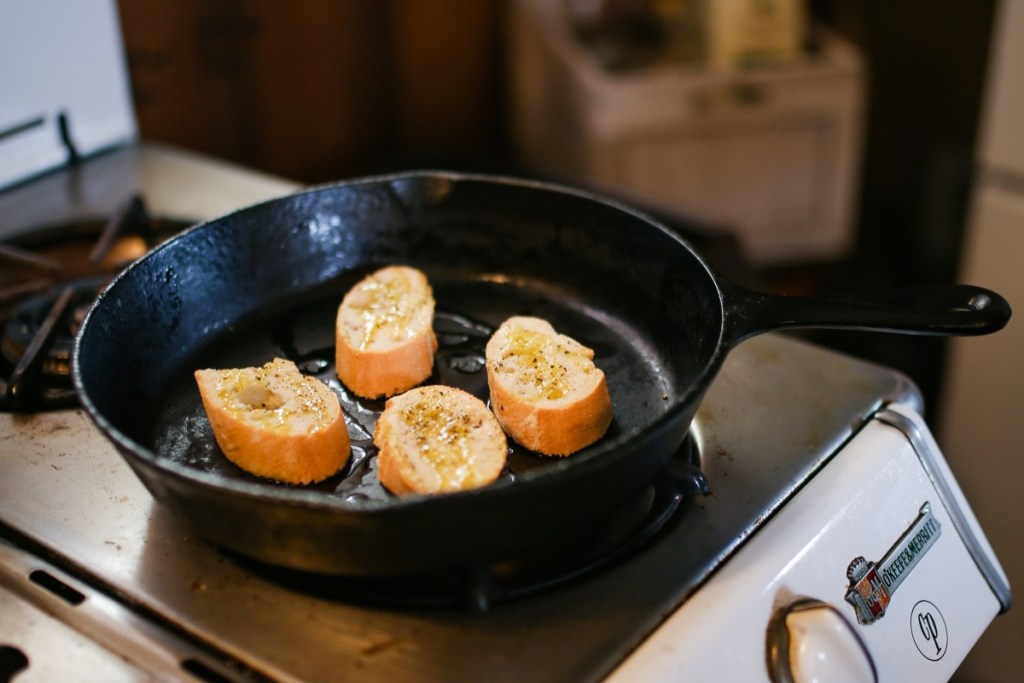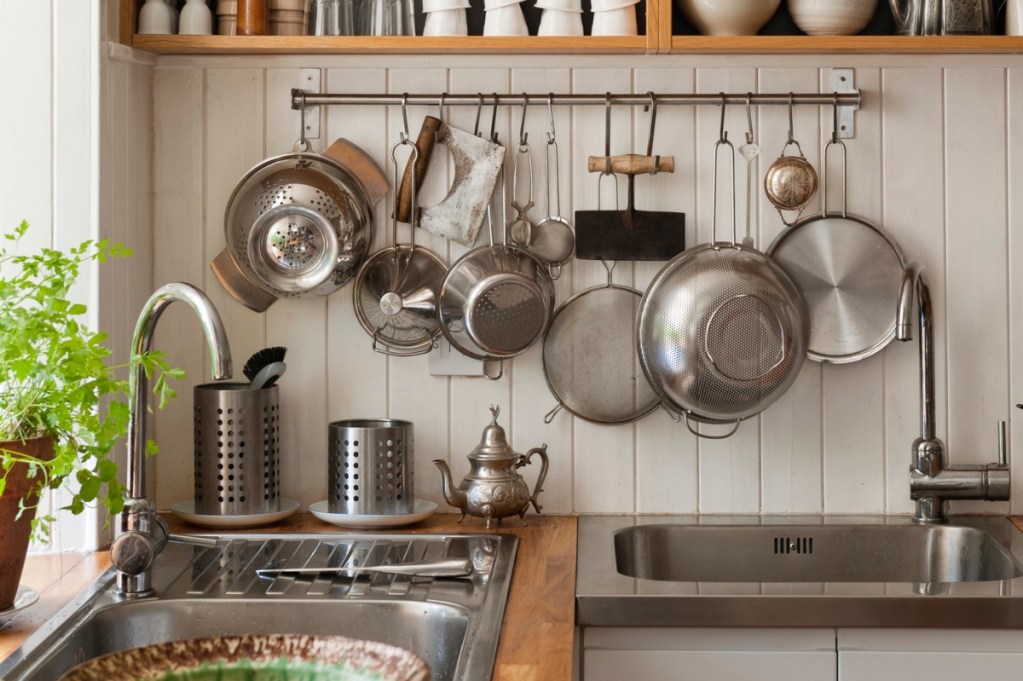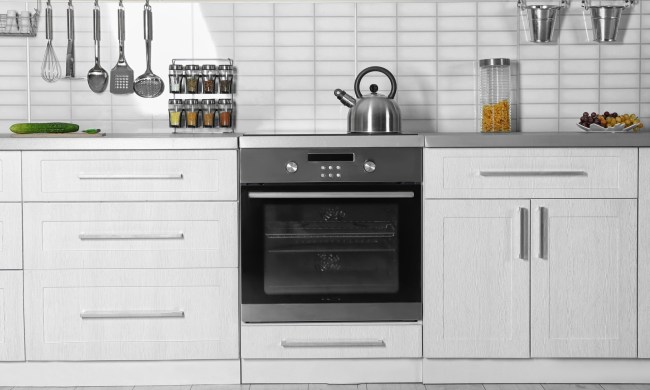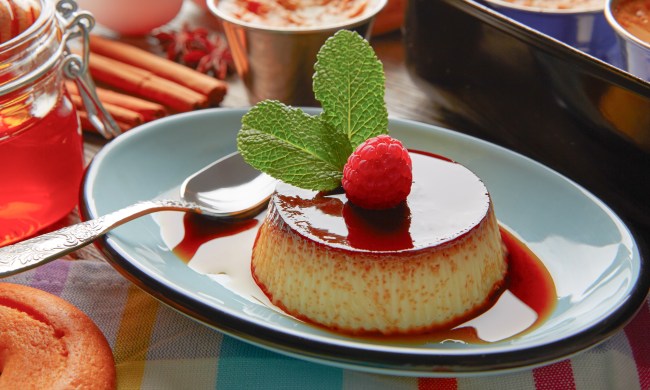One of the greatest questions among home cooks is whether they should use cast iron or carbon steel pans in their kitchens. While both have unique benefits, it can be challenging to discern which meals call for which pans. The sleek and stylish appeal of carbon steel can entice many home cooks looking to make light and flavorful dishes. On the other hand, some home chefs favor the traditional feel of cast iron for savory and hearty meals. However, when it comes down to choosing between the two, many homeowners are unsure of which will best suit their needs. Are these pans interchangeable? Or is one better than the other?
In this article, we’ll cover the benefits and drawbacks of both carbon steel vs. cast iron to decide which pan is genuinely the best for you.

Everything you need to know about cast iron frying pans
Most people assume cast iron is made of pure iron. However, cast iron is actually made of an alloy of iron and carbon, much like steel. Cast iron has a higher concentration of carbon than steel, with about two to 3.5 percent more carbon content.
The greater amount of carbon is what gives cast iron that bumpy and rough texture. This makes cast iron brittle, meaning the pan requires more material to make it heavier and more durable.
Bake, braise, or roast with your cast iron pan
Cast iron pans are well known for their versatility and ability to retain heat. While they take longer than other pans to heat up, they can reach higher temperatures, making them great for the stovetop or the oven.
While cast iron pans are durable kitchenware, they are also quite heavy, making it difficult to sauté vegetables or maneuver around the kitchen. However, many chefs favor these pans since they can use them in many other situations, including baking, grilling, and broiling.
Be sure to season your cast iron pan
Seasoning a cast iron pan is fairly simple. Apply a coat of light oil and bake in the oven to create a natural non-stick coating. The advantage of this is that you can avoid the harsh chemicals that come with non-stick pans that use a synthetic coating like Teflon.
It’s also important to remember that cast iron pans should never drip-dry; otherwise, they will rust. Additionally, metal spatulas and harsh soaps can break down the oil coating that gives the cast iron pan its non-stick qualities. For some people, this extensive care can be deterring. Cooking with acidic foods can be challenging as well since the acid breaks down the layer of oil coating your pan, meaning your food may become slightly metallic in flavor.

What you need to know about carbon steel frying pans
Carbon steel frying pans are made with a higher concentration of iron than cast iron. Instead, they contain two percent carbon, making them qualify as steel while still retaining a matte finish. Due to its makeup, carbon steel is often less brittle than cast iron and is nearly half the weight.
While the pan is light to carry compared to the traditional cast iron, it is just as durable, making it an excellent cookware item. Unfortunately, carbon steel has the ability to rust and corrode, unlike stainless steel, requiring proper care to be long-lasting.
Great for cooking eggs, fish, and sautéed veggies
Since carbon steel pans are lightweight and easy to carry, they are perfect for sautéing and tossing vegetables or stir fry. Additionally, unlike cast iron, cooking eggs, omelets, and fish is made easy thanks to the smooth, non-stick surface of carbon steel.
Carbon steel is well-known for its ability to heat quickly and retain its temperatures, allowing for a more even sear on foods. However, since carbon steel also requires seasoning to create a non-stick coating, it is recommended to avoid cooking acidic foods.
How to care for carbon steel
Depending on manufacturer instructions, seasoning a carbon steel pan can look similar or different from seasoning a cast iron pan. You can often apply a thin layer of oil and heat the pan on the stovetop to burn on the natural coating. A few layers will result in a light brown stain on your carbon steel and provide a slippery coating for your foods.

Which is better? Carbon steel or cast iron frying pans?
Depending on your needs, cast iron and carbon steel are both remarkable materials for your kitchen pans.
Cast iron is a great all-around kitchen tool that allows you to cook on the stovetop, in the oven, or on the grill. Thanks to its heat retention, you can sear and cook anything so long as it isn’t too acidic. Caring for your cast iron pan can take some work, and you have to be careful not to allow water to sit on the pan to prevent rust. However, many people have enjoyed cast iron for generations, and thanks to its durability, you can ensure that your pan will be long-lasting.
Alternatively, carbon steel pans are a standard tool in professional kitchens since they can perform many of the same functions of cast iron while also doing more. They are quick to heat up and create an even sear on your food. Additionally, contrary to cast iron, carbon steel’s lightweight quality makes it easy to be more mobile in the kitchen or to sauté foods as needed. While their care differs based on manufacturer instructions, they are relatively easy to work with.
While both pans are undoubtedly impressive, we have to conclude that in the debate between carbon steel vs. cast iron pans, carbon steel is our preference. Its versatility, mobility, and sturdy material are impressive. We value the even heat distribution and its ability to cook eggs and fish without sticking. While it isn’t as well known as cast iron when it comes to home cooking, we’d argue that it is a favorable choice and will one day become a more popular choice for cooking delicious meals.



